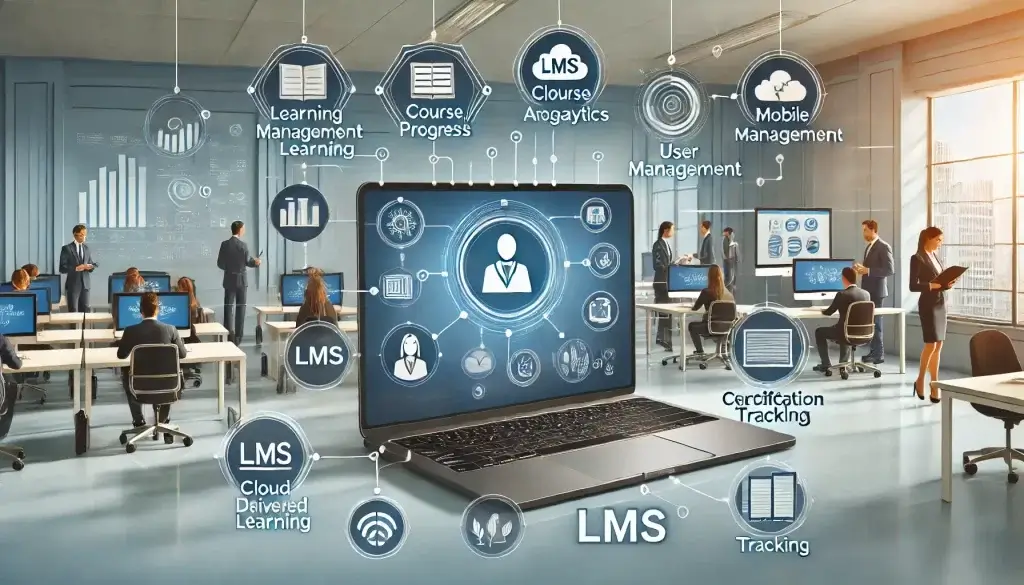Selecting the right enterprise learning management system (LMS) can feel as overwhelming as picking a show on Netflix when you’re hungry, tired, and indecisive. The stakes are high—it’s not just about fancy interfaces or buzzwords. A solid LMS can make or break how effectively your enterprise delivers training, improves employee skills, and drives long-term business growth.
If you’re weighing your options or wondering where to start, don’t worry. We’ll walk you through the must-have features to look for in an enterprise LMS. By the end of this post, you’ll be equipped to make an informed decision that’ll set you—and your employees—up for success.

Why Choosing the Right LMS Matters
Picture this. You’ve invested in training programs only to find employees struggling with clunky systems or avoiding courses altogether. A poorly chosen enterprise LMS can lead to low engagement, wasted training budgets, and frustrated teams.
On the flip side, the right LMS streamlines learning, provides engaging content, and enables employees to achieve their best. It keeps everyone—HR, managers, and learners—on the same page (and sane).
Now that we’ve set the stage, let’s look at the key features your enterprise learning management system must have.
1. Scalability for Growing Teams
No business wants to outgrow its technology in under a year. When choosing an LMS, scalability should be a priority.
Your organization might have 500 employees today but could grow to 2,000 in the next few years. Will the LMS grow with you? Look for a system that can expand effortlessly as your workforce and training needs evolve.
🔑 Pro Tip: Ask vendors about concurrent user capacity and performance as your team grows.
2. Customization to Reflect Your Company’s Culture
Your enterprise learning management system should feel like it belongs to your organization, not like a template everyone else is using. Teaching compliance? Design courses with your branding. Rolling out leadership programs? Create custom pathways.
Here’s what to look out for:
- The ability to add your company’s logos, colors, and messaging.
- Options to structure courses or training programs specific to different teams or goals.
- Modular builds that allow you to prioritize features your team needs most.
Remember, no two organizations are the same, so your LMS shouldn’t be one-size-fits-all either.
3. Easy-to-Use Interface (Because Nobody Likes Clunky)
We’ve all encountered frustrating software that feels impossible to figure out without a 400-page manual. Don’t make your employees go through that pain!
Whether your learners are tech experts or technophobes, the LMS should be intuitive such as the Vextur: enterprise learning management system. A clunky interface will kill engagement faster than an unskippable ad. Focus on systems with simple navigation, clear layouts, and easy-to-understand dashboards.
Oh, and don’t forget about the admin side—the folks setting up training programs need to love it too.
4. Mobile-Friendly Functionality
We’re living in a mobile-first world. If your enterprise LMS doesn’t work seamlessly on a smartphone or tablet, you’re already losing points.
Features you’ll want:
- Access to courses via mobile apps or responsive web design.
- Offline training options (for airplanes, commutes, or spotty Wi-Fi days).
- The same functionality on mobile as desktop—no one likes being short-changed on features just because they’re on a smaller screen.
Mobile-friendly LMSs are a must-have for teams on the go, remote employees, or satellite offices.
5. Powerful Reporting and Analytics
Training without data is like flying blind. You’ll want an LMS that tracks:
- Course completion rates.
- Employee progress.
- Where learners are struggling (and succeeding).
Having these insights helps HR, L&D teams, and managers understand the effectiveness of training and make informed decisions about future programs. Bonus points for systems that offer visual dashboards with easy-to-read charts!
6. Multi-Language Capabilities
If your enterprise operates globally—or plans to—you need an LMS that supports multiple languages.
This feature ensures all employees feel included and can comfortably learn in their native language. Whether it’s Mandarin, French, or Spanish, choose a system that caters to your multilingual workforce.
7. Integration with Existing Tools
Does your enterprise use tools like Slack, Microsoft Teams, or Salesforce? Integration with these platforms can be essential for smoother workflows.
Imagine the convenience of pulling up training modules directly from your team’s Collaboration tool or tracking results within your CRM. The right LMS should blend seamlessly into the tools you already depend on.
Pro Tip ✔️ Check for API functionality to see how flexible integrations could be if your tooling changes in the future.
8. Advanced Security Features
Let’s talk security—it’s not glamorous, but it’s critical. An enterprise-level LMS deals with sensitive information, from personal employee data to compliance certifications.
You’ll want robust security measures, such as:
- Data encryption.
- Secure user authentication.
- Regular backups.
Compliance with standards like GDPR or ISO 27001 is also a must for enterprises working in regulated industries.
9. Gamification for Engagement
Who doesn’t love a little healthy competition? Gamification keeps employees motivated and transforms training from a chore into something they look forward to.
Look for gamification features like:
- Leaderboards for friendly competition.
- Badges or awards for course completion milestones.
- Interactive quizzes to break the monotony.
It makes training not only effective but genuinely fun.
The LMS That Fits Your Enterprise
Choosing the right enterprise learning management system isn’t something to rush through. It’s an investment that can transform how your teams grow, learn, and thrive.
By focusing on key features like scalability, analytics, mobile functionality, and gamification, you set your organization up for both short-term success and long-term adaptability.
Take your time and explore options that feel tailored to your specific needs. Remember, the goal isn’t just to adopt any LMS; it’s to adopt the right LMS.
Want more tips on implementing a learning system for your organization? Subscribe to our newsletter for expert insights delivered straight to your inbox.
